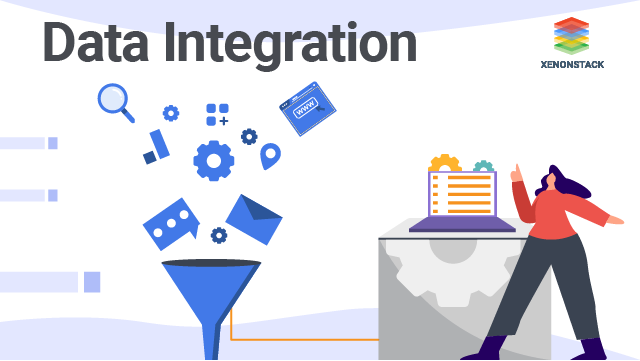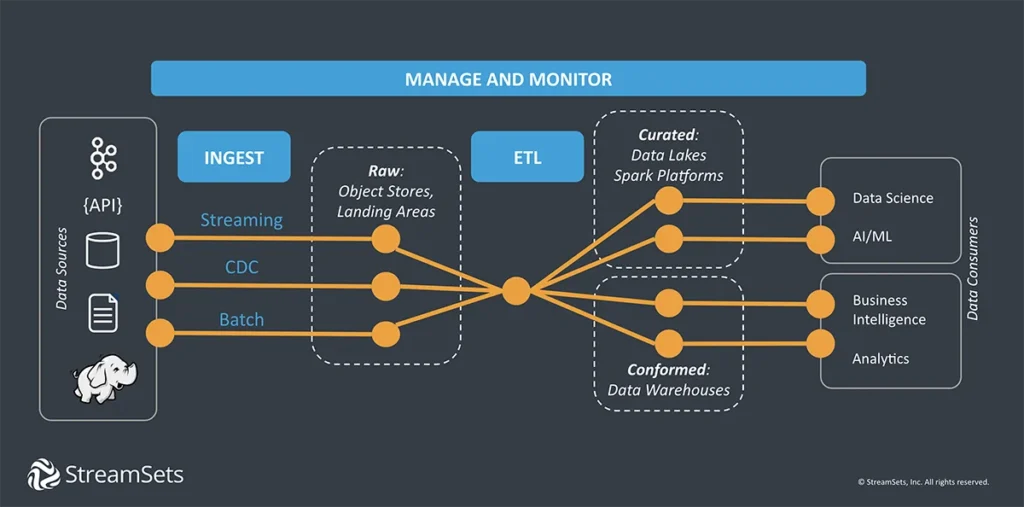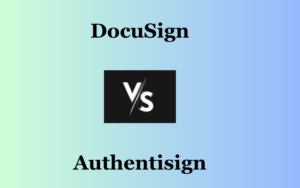Introduction
Data integration tools are essential for businesses looking to streamline their data management processes. These tools help organizations collect, process, and manage data from various sources, enabling them to make informed decisions and gain valuable insights.

In today’s digital age, businesses generate vast amounts of data from various sources such as websites, mobile apps, social media, and sensors. Managing this data can be challenging, especially when it is stored in different formats and locations. Data integration tools solve this problem by providing a unified platform for managing all types of data.
One of the key features of data integration tools is their ability to connect to multiple data sources and extract data in real-time. This allows businesses to access up-to-date information and make timely decisions. Additionally, these tools offer features such as data cleansing, transformation, and enrichment, ensuring that the data is accurate and consistent across all systems.
Table of Contents
Another important aspect of data integration tools is their scalability. These tools are designed to handle large volumes of data, making them suitable for businesses of all sizes. Whether you’re a small startup or a large enterprise, data integration tools can help you manage your data effectively.
Key Features
Data integration tools offer a range of features to help businesses manage their data effectively. These features are designed to streamline the process of collecting, processing, and integrating data from various sources. Here are some key features of data integration tools:
- Data Mapping: Data integration tools allow users to map data fields from different sources to ensure that the data is properly aligned and can be used together.
- Data Transformation: These tools offer the ability to transform data into a consistent format, making it easier to analyze and use.
- Connectivity Options: Data integration tools support a wide range of connectivity options, including APIs, databases, and cloud services, allowing businesses to easily connect to different data sources.
- Data Quality Management: These tools often include features for data cleansing, deduplication, and enrichment, ensuring that the data is accurate and consistent.
- Real-time Data Processing: Many data integration tools support real-time data processing, allowing businesses to access up-to-date information for making timely decisions.
- Scalability: Data integration tools are designed to handle large volumes of data, making them suitable for businesses of all sizes.
- Workflow Automation: These tools offer workflow automation features, allowing businesses to automate repetitive tasks and streamline their data management processes.
- Security and Compliance: Data integration tools include features for data security and compliance, ensuring that data is protected and meets regulatory requirements.

Integration Capabilities
Data integration tools are essential for businesses looking to integrate data from various sources. These tools offer a wide range of integration capabilities, allowing businesses to connect to different data sources and formats. Here are some key integration capabilities of data integration tools:
- Connectivity: Data integration tools support a wide range of connectivity options, including APIs, databases, and cloud services. This allows businesses to easily connect to different data sources and formats.
- Data Source Compatibility: These tools are compatible with various data sources, such as relational databases, NoSQL databases, flat files, and web services, ensuring that businesses can integrate data from any source.
- Data Format Support: Data integration tools support various data formats, including CSV, XML, JSON, and more, making it easy to work with different types of data.
- Real-time Integration: Many data integration tools support real-time data integration, allowing businesses to access up-to-date information for making timely decisions.
- Data Transformation: These tools offer data transformation capabilities, allowing businesses to transform data into a consistent format that can be used across different systems.
- Data Mapping: Data integration tools allow users to map data fields from different sources, ensuring that the data is properly aligned and can be used together.
- Data Synchronization: These tools offer data synchronization features, allowing businesses to keep data consistent across different systems and locations.
- Data Replication: Data integration tools support data replication, allowing businesses to replicate data from one source to another for backup or analysis purposes.

User Interface and Ease of Use of Data Integration Tools
The user interface (UI) and ease of use are critical factors when choosing a data integration tool. A user-friendly interface can significantly improve productivity and efficiency. Here’s how data integration tools typically approach user interface and ease of use:
- Intuitive Design: Data integration tools strive to have an intuitive design that allows users to easily navigate the tool and perform tasks without extensive training.
- Drag-and-Drop Functionality: Many data integration tools offer drag-and-drop functionality, allowing users to easily create data integration workflows by dragging and dropping components onto a canvas.
- Visual Representation: These tools often use visual representations such as flowcharts or diagrams to help users understand the data integration process and workflow.
- Pre-built Templates: Some data integration tools provide pre-built templates or workflows for common integration tasks, making it easier for users to get started.
- Data Preview: Data integration tools often offer data preview features that allow users to preview data before processing it, ensuring that the data is correct and properly formatted.
- Error Handling: These tools provide robust error handling features that help users identify and resolve issues in data integration workflows.
- Documentation and Support: Data integration tools typically offer comprehensive documentation and support to help users understand how to use the tool effectively.
Performance and Scalability of Data Integration Tools
Performance and scalability are crucial factors to consider when choosing a data integration tool. These factors determine how well the tool can handle large volumes of data and process it efficiently. Here’s an overview of performance and scalability considerations for data integration tools:
- Data Processing Speed: One of the key aspects of performance is the speed at which the data integration tool can process data. A faster processing speed allows businesses to access and use their data more quickly, leading to faster decision-making and improved productivity.
- Resource Utilization: Data integration tools should be able to efficiently utilize system resources such as CPU and memory to ensure optimal performance. Tools that are resource-intensive may lead to system slowdowns and performance issues.
- Scalability: Scalability refers to the ability of a data integration tool to handle increasing data volumes and user loads. A scalable tool can grow with your business needs without compromising on performance.
- Parallel Processing: Many data integration tools support parallel processing, allowing them to process multiple data streams simultaneously. This can significantly improve performance, especially when dealing with large datasets.
- Data Compression and Optimization: Some data integration tools offer data compression and optimization features, which can help reduce the size of data being processed, leading to improved performance.
- Monitoring and Tuning: Effective monitoring and tuning capabilities are essential for maintaining optimal performance. Data integration tools should provide insights into system performance and allow users to fine-tune settings for better performance.
- Failover and Recovery: A robust data integration tool should have failover and recovery mechanisms in place to ensure data integrity and availability in case of system failures.
- Data Quality Impact: While not directly related to performance, data quality can impact the efficiency of data integration processes. Tools that offer data quality features can help improve the overall performance of data integration processes.
Supported Integrations by Data Integration Tools
Data integration tools offer a wide range of integrations to connect with various data sources, formats, and systems. These integrations are crucial for businesses to access and process data from different sources efficiently. Here are some common types of integrations supported by data integration tools:
- API Integrations: Data integration tools support integrations with Application Programming Interfaces (APIs) to access data from web services, cloud applications, and other systems. This allows businesses to connect with popular APIs such as Google Maps, Salesforce, and more.
- Database Integrations: Data integration tools can connect to different types of databases, including SQL, NoSQL, and cloud databases. This allows businesses to access and integrate data stored in databases such as MySQL, MongoDB, and Amazon Redshift.
- File Format Support: These tools support various file formats, including CSV, XML, JSON, and Excel, making it easy to work with different types of data files.
- Cloud Service Integrations: Data integration tools integrate with popular cloud services such as Amazon Web Services (AWS), Microsoft Azure, and Google Cloud Platform (GCP). This allows businesses to access and integrate data from cloud storage, databases, and other services.
- Big Data Integrations: Data integration tools support integrations with big data technologies such as Hadoop and Spark, allowing businesses to process and analyze large volumes of data efficiently.
- Enterprise Application Integrations: These tools integrate with enterprise applications such as CRM, ERP, and marketing automation systems, enabling businesses to synchronize data across different systems.
- Data Warehouse Integrations: Data integration tools can integrate with data warehouses such as Amazon Redshift, Google BigQuery, and Snowflake, allowing businesses to centralize and analyze data from various sources.
- Custom Integrations: Some data integration tools offer the flexibility to create custom integrations using APIs or SDKs, allowing businesses to integrate with proprietary or custom-built systems.
Security and Compliance Features of Data Integration Tools
Data integration tools play a critical role in ensuring the security and compliance of data as it moves between different systems and sources. These tools offer a variety of features to protect data and ensure compliance with regulations. Here are some key security and compliance features of data integration tools:
- Data Encryption: Data integration tools use encryption techniques to secure data in transit and at rest, ensuring that sensitive information is protected from unauthorized access.
- Access Control: These tools provide access control mechanisms to limit who can access and manipulate data, ensuring that only authorized users can access sensitive information.
- Data Masking: Data integration tools offer data masking features to obfuscate sensitive data, ensuring that it remains protected even if accessed by unauthorized users.
- Audit Logging: These tools provide audit logging capabilities to track and monitor data access and modifications, helping organizations detect and respond to security incidents.
- Compliance Reporting: Data integration tools offer compliance reporting features to generate reports that demonstrate compliance with regulations such as GDPR, HIPAA, and PCI DSS.
- Data Governance: These tools support data governance practices by providing tools and features to manage data quality, metadata, and policies.
- Secure Connectivity: Data integration tools offer secure connectivity options, such as SSL/TLS, VPNs, and SSH, to ensure that data is transmitted securely between systems.
- Regulatory Compliance: Data integration tools comply with various regulatory requirements, ensuring that organizations can safely and legally transfer data between systems.
Wants to learn about Email marketint tools
Pricing Plans for Data Integration Tools
Data integration tools offer a range of pricing plans to suit different business needs and budgets. Understanding these pricing plans is essential for businesses looking to invest in a data integration tool. Here are some common pricing models and factors to consider when evaluating pricing plans for data integration tools:
- Subscription-Based Pricing: Many data integration tools offer subscription-based pricing, where users pay a monthly or annual fee for access to the tool. The cost of the subscription can vary based on the features included and the number of users or data sources supported.
- Usage-Based Pricing: Some data integration tools offer usage-based pricing, where users pay based on the amount of data processed or the number of API calls made. This pricing model can be cost-effective for businesses with fluctuating data processing needs.
- Tiered Pricing: Data integration tools often offer tiered pricing plans, where users can choose from different tiers based on their needs. Each tier may offer different features or limits on data processing volume.
- Free Trial: Many data integration tools offer a free trial period, allowing users to test the tool before committing to a paid plan. This can be a great way to evaluate the tool’s features and performance before making a purchase decision.
- Freemium Plans: Some data integration tools offer freemium plans, where users can use a limited version of the tool for free, with the option to upgrade to a paid plan for additional features and functionality.
- Custom Pricing: For businesses with specific needs or large-scale data integration requirements, some tools offer custom pricing plans. These plans are tailored to the business’s needs and may include additional features or support options.
- Support and Training: When evaluating pricing plans, it’s important to consider the level of support and training offered by the tool vendor. Some tools include support and training as part of the pricing plan, while others may charge extra for these services.
Top 10 Data Integration Tools to Streamline Your Business Operations
Here are 10 examples of data integration tools that can help streamline your business operations:
- Informatica PowerCenter: Informatica PowerCenter is a powerful data integration tool that provides a unified platform for accessing, integrating, and delivering data across the enterprise.
- Talend Data Integration: Talend Data Integration is a comprehensive data integration platform that enables businesses to integrate, cleanse, and transform data from any source.
- IBM InfoSphere DataStage: IBM InfoSphere DataStage is a leading data integration tool that enables businesses to integrate and transform large volumes of data from disparate sources.
- Microsoft SQL Server Integration Services (SSIS): SSIS is a component of the Microsoft SQL Server database software that provides data integration and workflow solutions.
- Oracle Data Integrator (ODI): Oracle Data Integrator is a comprehensive data integration platform that enables businesses to integrate, transform, and load data from various sources.
- SAP Data Services: SAP Data Services is a data integration and transformation software that enables businesses to integrate, transform, and improve the quality of data across the enterprise.
- Pentaho Data Integration: Pentaho Data Integration is an open-source data integration tool that enables businesses to extract, transform, and load data from various sources.
- Apache Nifi: Apache Nifi is a data integration tool that provides an intuitive interface for designing data flows and automating data movement between systems.
- Matillion ETL: Matillion ETL is a cloud-based data integration platform that enables businesses to extract, transform, and load data into cloud data warehouses such as Amazon Redshift and Snowflake.
- SnapLogic: SnapLogic is a cloud-based integration platform that enables businesses to connect applications, data sources, and APIs to automate workflows and streamline business processes.
These tools offer a range of features and capabilities to help businesses integrate data from various sources, transform it into actionable insights, and improve overall efficiency and productivity.




